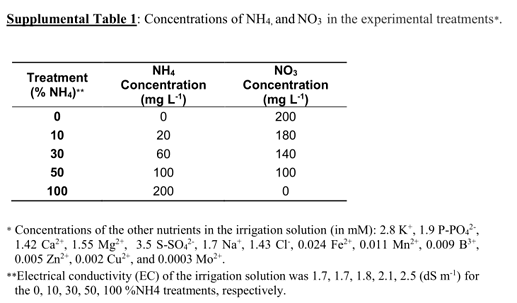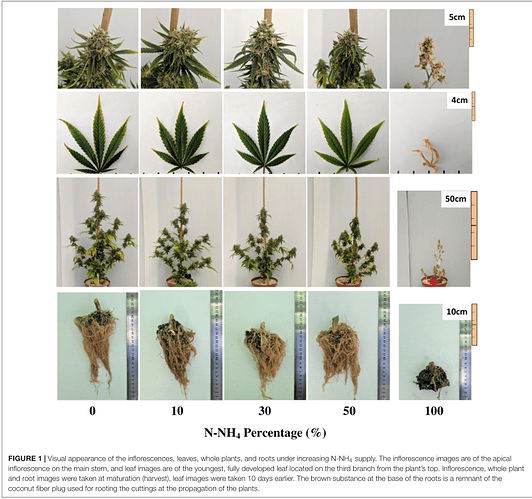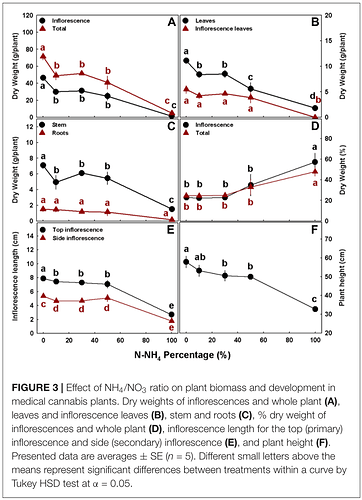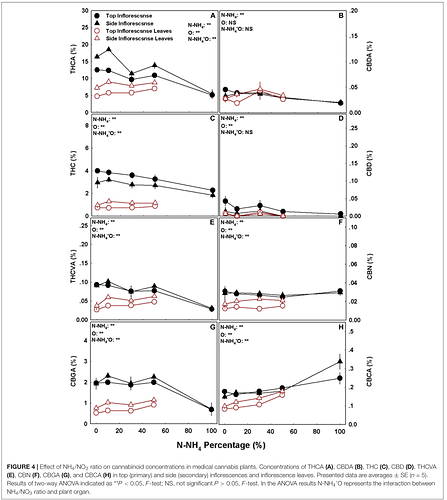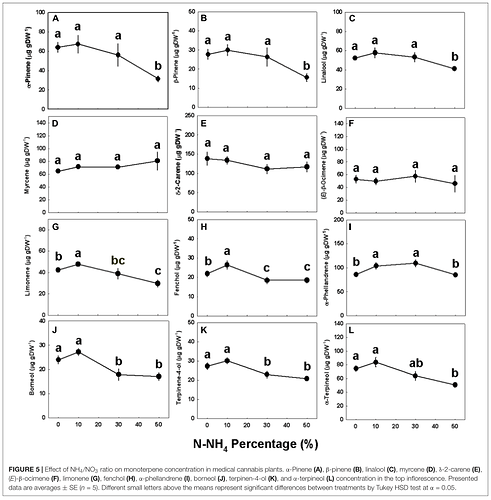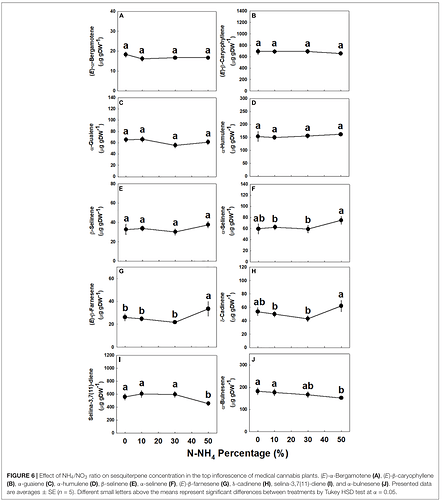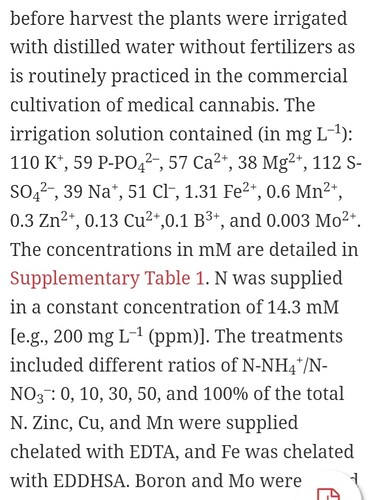Great study:
I have found over years of testing it’s better to use less than more NH4. Plant’s can’t regulate their NH4 uptake, unlike NO3. So, NH4 kind of acts like plant mainlining:

The study:
10% NH4 to total-N (NH4 + NO3) was the best of the worst regarding effects from NH4. The 10% NH4 of TN equates to a NO3:NH4 ratio of 9:1. Results at 10% NH4:
-
Increase in most tested cannabinoids and monoterpenes. The study shows no increase in THC, but that’s only THC; when we look at total-THC (i.e., eq. for THCa–>THC + THC), there’s a notable increase in side/bottom flowers.
-
Marginal positive and negative effects on tested sesquiterpene4s
-
Reduction in biomass
-
Variable effect (increases and decreases) in plant tissue nutrient concentration based on tissue type (flower, sugar leaves, sun leaf, stem, and roots)
I use 5.25% to ~6.25% NH4 to total nitrogen, dictated by my target NO3:NH4 ratio of 15:1 to 18:1. I have tested many NO3:NH4 ratios and have fried my fair share of plants. Anything close to NO3:NH4 of 6:1 (14% NH4) is dangerous territory. I never drop below NO3:NH4 of 12:1 (7.7% NH4).
Adding a bit of NH4 is beneficial for many reasons, such as stabilizing substrate pH, increasing CO2 fixation, and long-term CO2 use efficiency. Now, at low % NH4 we can add increasing some cannabinoids, monoterpenes, and modulating nutrient contenion in plant tissue.
It would be interstesing to correlate nutrient macronutrient ratios to plant tissue macronutrient ratios.
After reading this study, I will conduct a rigorous scientific study looking at the same metrics as this study (flowers, sugar lealves, and sun leaves) under 1%, 2.5%, 5%, and 7.5% NH4 ratios in a plant growth research chamber.
